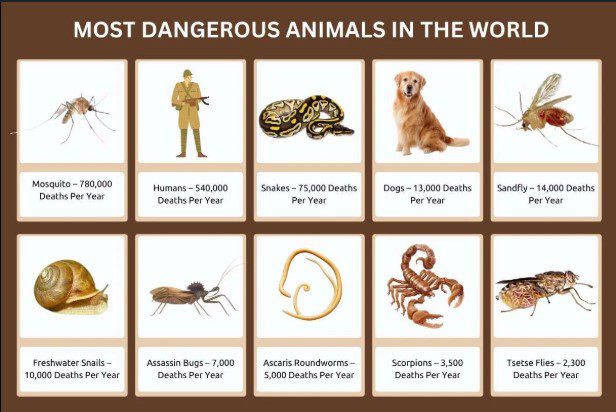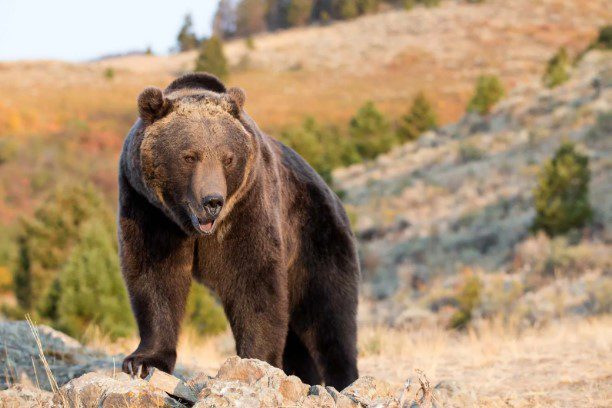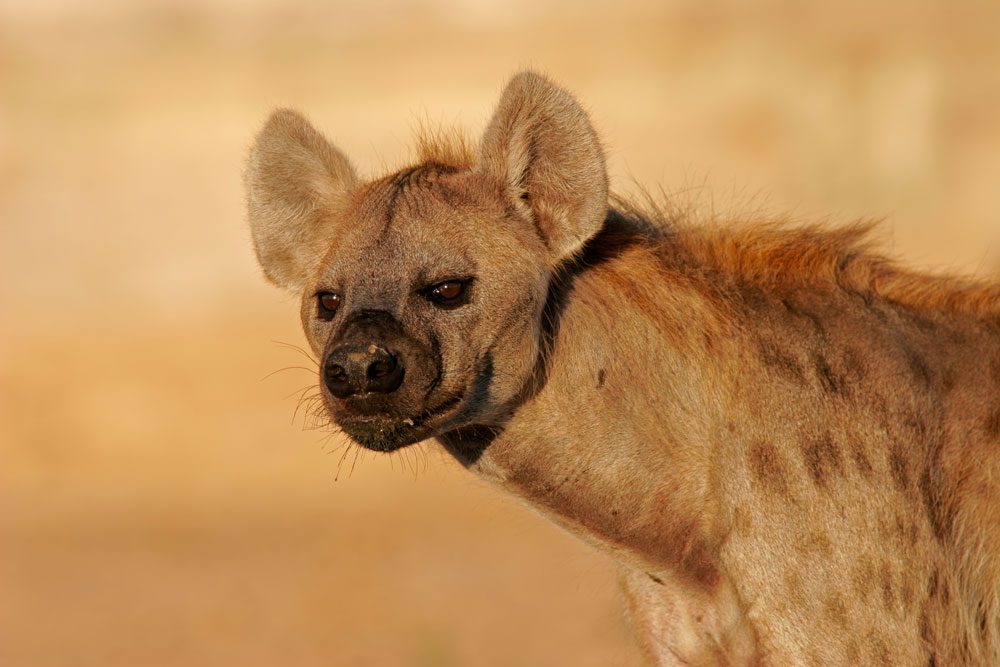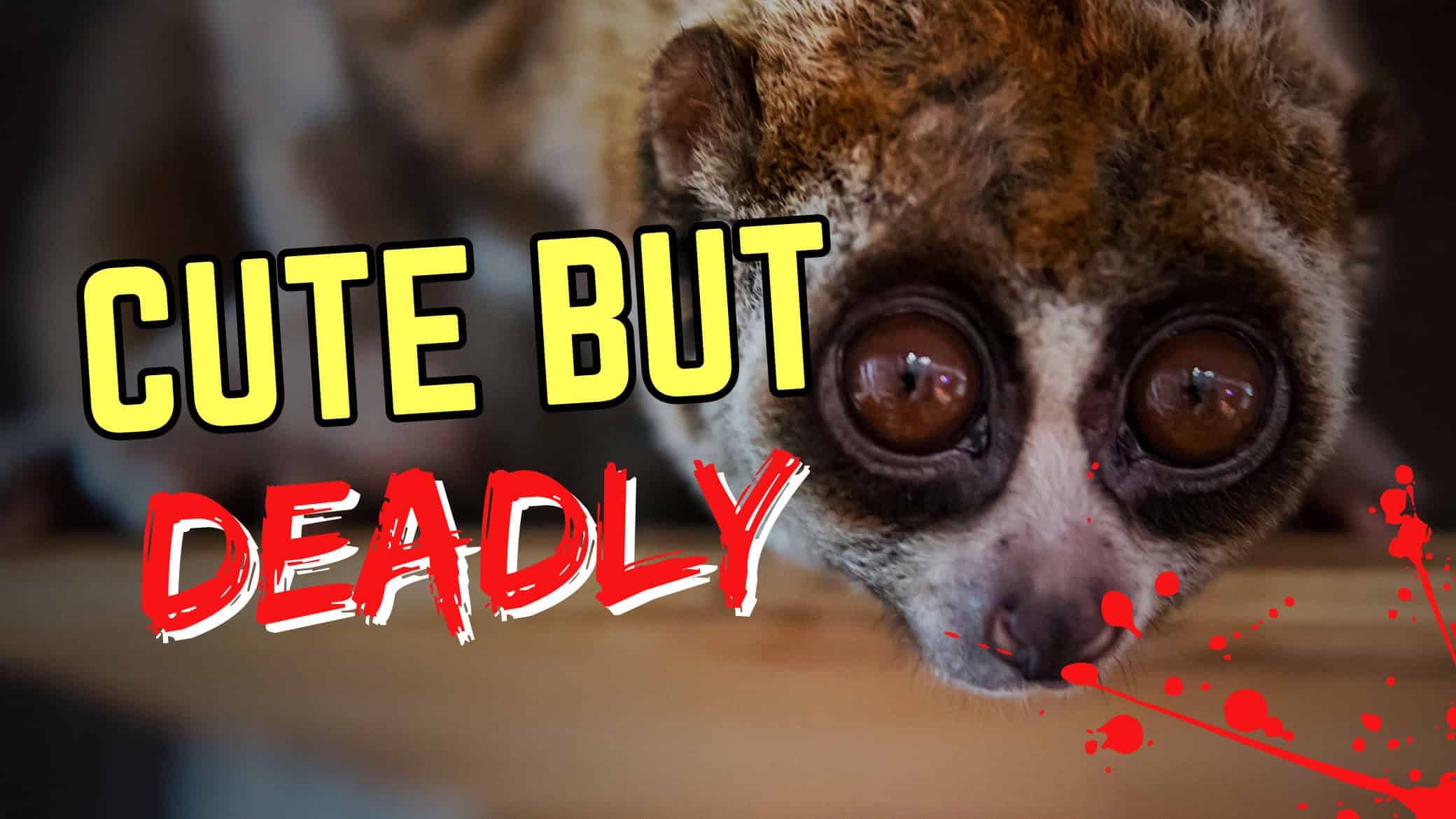Top 10 Dangerous Animal to Own You Wouldn’t Want as Pet

Introduction
While the idea of owning an exotic or wild dangerous animal might seem thrilling or unique, not all creatures are meant to be kept as pets. Some dangerous animal, no matter how fascinating or beautiful they may appear, are simply too dangerous, unpredictable, or difficult to care for responsibly. Beyond the practical challenges—such as specialized diets, large space requirements, or aggressive behavior—there are also ethical concerns. Many of these animals belong in their natural habitats, where they can thrive and behave as nature intended. Attempting to domesticate them often leads to stress for the animal and serious safety risks for the owner.
This list explores ten dangerous animal that, despite their appeal in movies, social media, or even exotic pet markets, should never be kept as household pets. From enormous predators to deceptively dangerous small creatures, these animals serve as a reminder that wild doesn’t mean pet-friendly.
Hippopotamus
Despite their somewhat comical appearance, hippopotamuses are among the most dangerous dangerous animals in Africa. Weighing up to 3,000 pounds, they are extremely territorial and can run faster than a human over short distances. Their massive jaws and sharp tusks make them capable of inflicting fatal injuries. Keeping a hippo as a pet would be not only impractical due to their size and habitat needs but also life-threatening due to their unpredictable aggression.
Saltwater Crocodile
Saltwater crocodiles are the largest living reptiles and are known for their power, speed, and aggressive nature. Growing up to 23 feet long, they are apex predators capable of attacking almost anything that enters their territory. Their care would require enormous, secure enclosures and a constant supply of fresh meat, making them nearly impossible to manage. Their sheer strength and instinctual behavior make them one of the most dangerous dangerous animals you could attempt to domesticate.
African Lion
The African lion may be known as the “king of the jungle,” but this majestic predator is no house cat. While some people have attempted to raise lions in captivity, their wild instincts never fully disappear. Adult males can weigh over 400 pounds and have the strength and speed to overpower a human in seconds. Their complex social needs, dietary demands, and potential for aggression make them completely unsuitable as pets, both for safety and ethical reasons.

Grizzly Bear
Grizzly bears are immensely powerful dangerous animals that belong in the wild, not in someone’s backyard. Adult grizzlies can weigh over 700 pounds and are capable of running at speeds of up to 35 miles per hour. Even those raised in captivity retain their natural instincts, which can make them unpredictable and dangerous. Their strength, combined with their need for vast roaming space and a highly varied diet, makes them impossible to safely or responsibly keep as pets.
King Cobra
The king cobra is the world’s longest venomous snake, capable of delivering enough neurotoxic venom in a single bite to kill an elephant. While experienced herpetologists may study them under strict safety protocols, keeping one as a pet is extremely dangerous. Their potent venom, speed, and defensive behavior make them a constant threat in captivity. Additionally, their care requires expert knowledge, controlled environments, and specialized handling—none of which are practical for the average pet owner.
Blue-Ringed Octopus
Small but incredibly lethal, the blue-ringed octopus is one of the most venomous marine dangerous animals in the world. About the size of a golf ball, this creature carries venom that can cause paralysis and death in humans—with no known antidote. Its striking appearance may tempt marine enthusiasts, but the risks far outweigh the novelty. Housing such an dangerous animal safely is nearly impossible, and even a minor mishandling could have fatal consequences.
Cassowary
The cassowary, often referred to as the world’s most dangerous bird, is native to the tropical forests of Australia and New Guinea. Standing up to 6 feet tall, it has powerful legs and dagger-like claws capable of inflicting serious injury or even death. Known for their aggressive behavior when provoked, cassowaries are unpredictable and require large, secure enclosures. Their solitary nature and territorial instincts make them a dangerous and unsuitable choice for domestication or companionship.

Hyena
Hyenas are often misunderstood creatures, but their wild nature makes them terrible candidates for pets. Known for their incredibly strong jaws—stronger than a lion’s—they can crush bones with ease. Hyenas are social dangerous animal with complex pack dynamics that are nearly impossible to replicate in a domestic setting. Even those raised in captivity retain their aggressive tendencies and can become dangerous as they mature. Their unpredictable behavior and physical power make them both unsafe and unethical to keep as pets.
Elephant
While elephants are intelligent, social, and emotionally complex dangerous animal, they are entirely unsuited for life as a pet. Weighing up to 12,000 pounds, they require vast amounts of space, food, water, and constant care. Captivity often leads to severe stress, behavioral issues, and health problems for elephants. Their sheer size and strength also pose serious safety risks. Keeping an elephant as a pet is not only dangerous and expensive, but it also raises major ethical concerns about dangerous animal welfare.
Slow Loris
The slow loris may look irresistibly cute with its big eyes and small size, but it hides a dangerous secret—it’s one of the few venomous mammals in the world. When threatened, it can deliver a toxic bite that causes severe allergic reactions or even death. Beyond the danger, slow lorises suffer greatly in captivity; they are nocturnal, easily stressed, and often have their teeth removed illegally for the pet trade. Owning one is both cruel and hazardous.
Conclusion
While exotic dangerous animals can seem fascinating or even adorable, the reality of keeping them as pets is far more dangerous and unethical than it may appear. These creatures have specific needs that are difficult—often impossible—to meet in a home environment. Many pose serious risks to human safety, while others suffer greatly when removed from their natural habitats. Ultimately, wild animals belong in the wild, and admiration should never come at the cost of their welfare or our own safety.
You Can Also Read: Top 10 Best Cat Breeds In The World
FAQS
Which animal should not be kept as a pet?
Exotic animals — lions, tigers, wolves, bears, reptiles, non-human primates — belong in their natural habitats and not in the hands of private individuals as “pets.” By their very nature, these animals are wild and potentially dangerous and, as such, do not adjust well to a captive environment.
What is bad for pets?
Alcoholic drinks and food products containing alcohol. Avocado (only mildly toxic to dogs and cats, but can be severely toxic, even deadly, to birds, rabbits, horses, and ruminants such as cattle, goats, and sheep) Caffeine (found in a lot of drinks such as coffee, tea, soda, and energy drinks) Chocolate.
What is the least problematic pet?
Australian Cattle Dog: These are usually preferred by active owners. This breed is strong and long-lived. Furthermore, they have minimal genetic problems. Border Collie: These furry friends are extremely energetic and healthy.
Why animals should not be kept as pets?
Captivity is Unfair to Wildlife and Communities
It becomes habituated to people, losing their instinctive fear of humans. The animal also can associate humans with food, which causes it to seek out human contact, often in a persistent or dangerous way or in a way that can be perceived as aggressive.
What animal is really friendly?
Dolphins are widely regarded as one of the friendliest animal species on the planet. This is due to being known for their playful and social nature. These intelligent creatures have a remarkable ability to interact with humans, both in the wild and in captivity.

[…] You Can Also Read: Dangerous Animal to Own You Wouldn’t Want as Pet […]